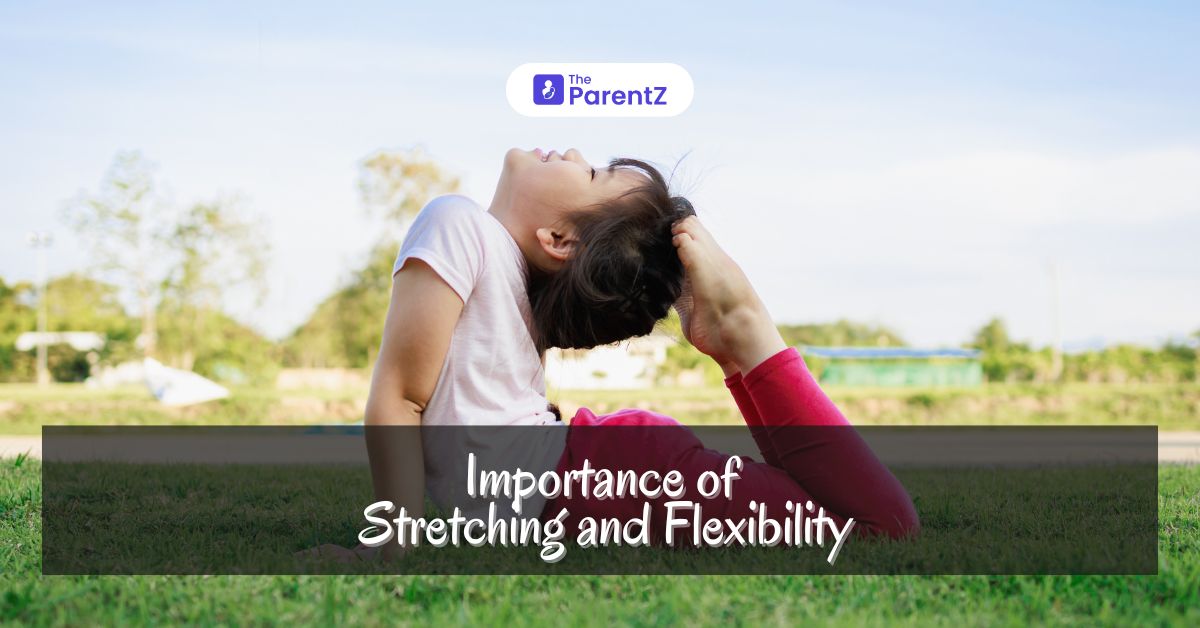hy lifestyle, regardless of age. Whether you’re a new parent, an active athlete, or an older adult looking to maintain your mobility, incorporating stretching into your daily routine can provide numerous benefits. In this blog post, we’ll explore the importance of stretching and flexibility, and provide tips to help you get started.
What is Stretching?
Stretching is the act of lengthening a muscle or muscle group to its fullest extent. It can be performed before or after physical activity, or as a standalone exercise. There are several types of stretching, including static stretching (holding a stretch for 30 seconds or more), dynamic stretching (active movements that increase range of motion), and ballistic stretching (bouncing movements that can increase the risk of injury).
Benefits of Stretching and Flexibility
Stretching offers a wide range of benefits for people of all ages:
- Increased Flexibility and Range of Motion: Regular stretching can help improve your ability to move your joints through their full range of motion, making everyday activities easier and reducing the risk of injury.
- Improved Circulation: Stretching increases blood flow to the muscles, delivering more oxygen and nutrients and helping to remove waste products.
- Reduced Muscle Tension and Pain: Tight muscles can lead to pain in the back, neck, and other areas. Stretching can help alleviate this discomfort and promote relaxation.
- Enhanced Athletic Performance: For athletes, stretching can help improve speed, strength, and endurance by increasing the range of motion and reducing the risk of injury.
- Better Posture: Stretching can help correct muscle imbalances that contribute to poor posture, reducing strain on the back and neck.
- Stress Relief: The act of stretching can help calm the mind and reduce feelings of stress and anxiety.
Tips for Safe and Effective Stretching
To get the most out of your stretching routine, follow these tips:
- Warm Up Before Stretching: Perform a light cardiovascular activity for 5-10 minutes to increase blood flow and warm up the muscles.
- Breathe Deeply: Inhale as you gently ease into the stretch and exhale as you release the stretch.
- Hold Each Stretch for 30 Seconds: Avoid bouncing or forcing the stretch, as this can lead to injury.
- Stretch Regularly: Aim for 3-5 days per week to maintain and improve flexibility.
- Listen to Your Body: If a stretch causes pain, stop immediately and consult with a healthcare professional if the pain persists.
Stretching for All Ages
Now, let’s explore how stretching can benefit you and your child at different stages:
- Newborns and Infants: While formal stretching exercises aren’t necessary for this age group, gentle passive movements during diaper changes or playtime can help maintain their natural flexibility.
- Toddlers and Preschoolers: Turn stretching into a game! Mimic animal movements like reaching for the sky like a giraffe or stretching your back like a cat.
- School-Aged Children: As children become more active in sports or dance, incorporate dynamic stretches (gentle movements that mimic the activity) before exercise and static stretches (holding a position for 20-30 seconds) after.
- Teenagers: Teens often push their bodies during physical activity. Encourage them to prioritize stretching routines to improve performance and reduce injury risk.
- Adults: As adults, we tend to lose flexibility. Regular stretching can help us maintain good posture, reduce aches and pains, and keep us moving with ease.
Tips for Making Stretching a Family Activity
- Keep it Fun: Turn stretching into a game or use songs and rhymes to keep children engaged.
- Lead by Example: Let your children see you stretching regularly.
- Make it Short and Sweet: Aim for 5-10 minutes of stretching a few times a week.
- Listen to Your Body: Don’t push yourself or your child to the point of pain.
- Focus on Quality Over Quantity: Hold stretches for the recommended time and breathe deeply.
Remember: Stretching should never be painful. If you or your child experience any discomfort, stop the stretch and consult a healthcare professional.
Conclusion
Stretching and flexibility are essential components of a healthy lifestyle for people of all ages. By incorporating stretching into your daily routine, you can enjoy numerous benefits, from improved athletic performance to reduced stress and pain. Remember to warm up, breathe deeply, and listen to your body to get the most out of your stretching routine.








Be the first one to comment on this story.